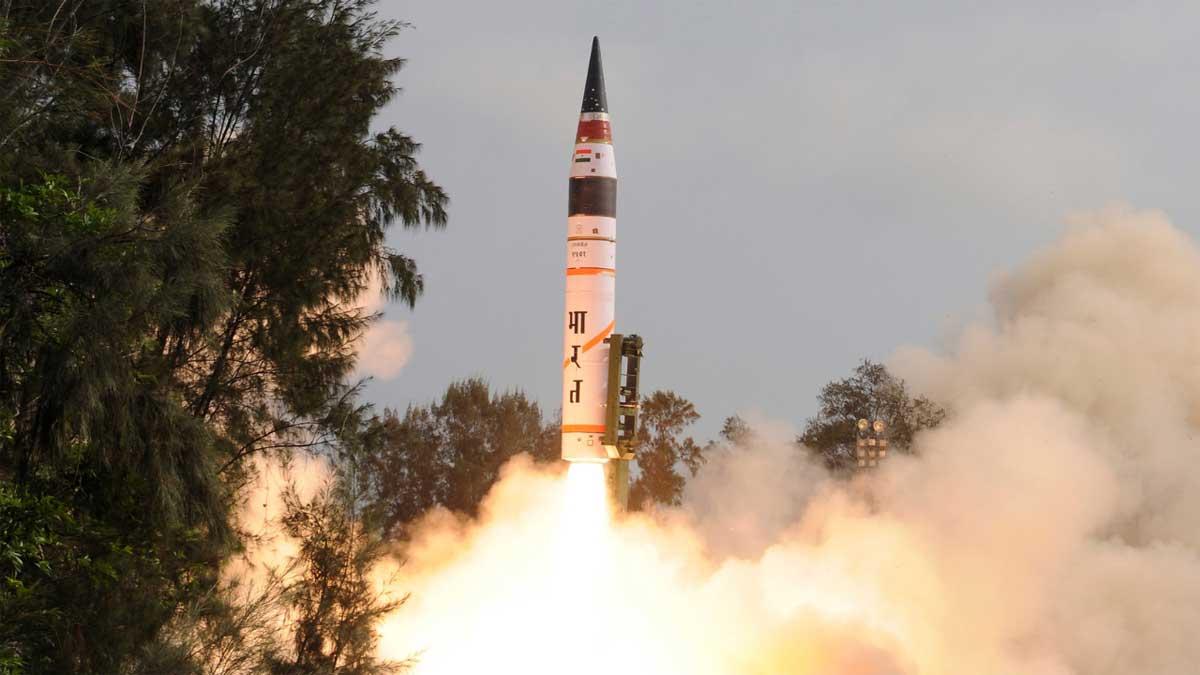India achieved a significant milestone on Monday with the successful inaugural flight test of the domestically produced Agni-5 missile featuring Multiple Independently Targetable Re-entry Vehicle (MIRV) technology, as part of the esteemed 'Mission Divyastra'. This accomplishment places India among the exclusive group of nations equipped with such advanced capabilities.
The incorporation of MIRV functionality enables a single missile to deploy multiple warheads at distinct locations, enhancing its strategic potency, according to informed sources.
Prime Minister Narendra Modi and Defence Minister Rajnath Singh extended their felicitations to the scientists of the Defence Research and Development Organisation (DRDO) for orchestrating the flawless test.
Expressing his pride in DRDO's achievement, Prime Minister Modi lauded the success of 'Mission Divyastra' and the integration of MIRV technology into the indigenous Agni-5 missile on social media platform 'X'.
Heading the 'Mission Divyastra' project is a distinguished female scientist, marking a notable milestone in gender diversity within India's scientific community.
With a striking range of up to 5,000 km, the Agni-5 missile encompasses a vast geographical expanse, encompassing nearly all of Asia, including the northern reaches of China, and extending into parts of Europe.
Defence Minister Rajnath Singh hailed the test as a significant stride in India's military capabilities, emphasizing the country's induction into the select league of nations possessing MIRV capabilities.
Singh also conveyed his heartfelt congratulations to the entire team of scientists at DRDO for their exceptional achievement, affirming India's pride in their accomplishment.
Featuring indigenous avionics systems and precise sensor packages, the weapon system ensured the accurate deployment of re-entry vehicles to their designated targets, underlined sources familiar with the project.
This technological feat underscores India's burgeoning prowess in the realm of advanced weaponry and reaffirms its commitment to bolstering its national security infrastructure.
While India has previously conducted numerous tests of the Agni-5 missile, this marks the maiden flight test incorporating MIRV capabilities, representing a significant advancement in India's strategic capabilities.
The Agni series of missiles, ranging from Agni 1 to Agni 4, have already been deployed, showcasing India's progressive advancements in missile technology.
In a separate endeavor last April, India conducted the inaugural flight trial of an endo-atmospheric interceptor missile from a naval vessel off the coast of Odisha in the Bay of Bengal, as part of its ambitious ballistic missile defense program.
The successful trial aimed to demonstrate India's capacity to engage and neutralize hostile ballistic missile threats, thereby elevating its stature among the elite group of nations possessing such defensive capabilities.
India's steadfast efforts in developing both endo and exo-atmospheric interception capabilities signify its commitment to bolstering its defenses against ballistic missile threats, both within and beyond the Earth's atmospheric boundaries.
Read also | Supreme Court to Review SBI's Request for Extension on Electoral Bond Disclosure
Read also | Ram Navami Designated as a Public Holiday in West Bengal


















